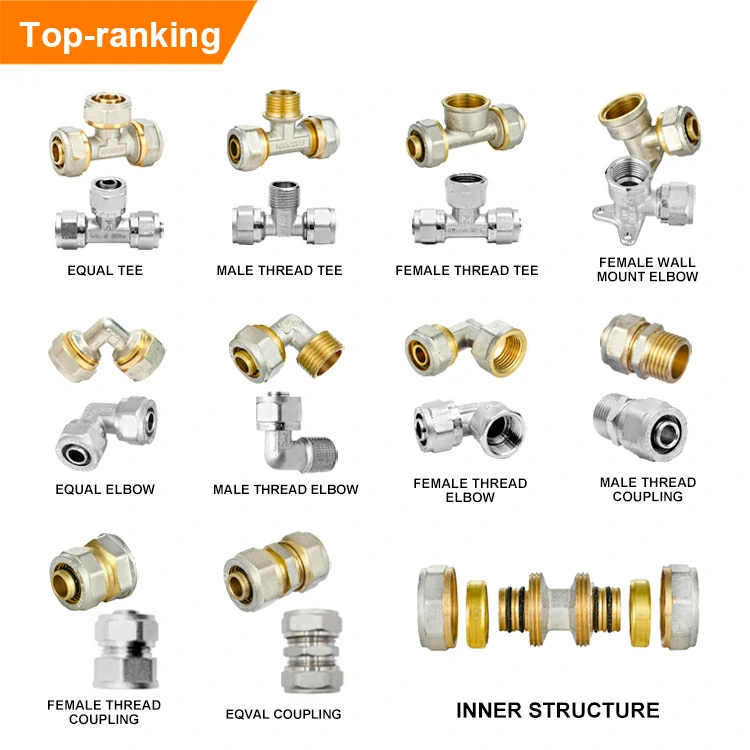PEX compression fittings are made from several types of materials, each contributing to the fitting’s durability, resistance to corrosion, and compatibility with PEX piping systems. The primary materials used in manufacturing PEX compression fittings include:
1. Brass
- Most Common Material: Brass is the most commonly used material for PEX compression fittings because it is strong, durable, and resistant to corrosion.
- Corrosion Resistance: It resists rust and is ideal for both hot and cold water systems.
- Popular for Plumbing: Brass fittings are commonly used in both residential and commercial plumbing due to their reliability and ease of installation.
2. Stainless Steel
- Higher Corrosion Resistance: Stainless steel compression fittings are often chosen for more corrosive environments or systems that require extra durability.
- Longer Lifespan
- Premium Option: While generally more expensive than brass, stainless steel provides superior performance, especially in high-pressure or highly corrosive conditions.
3. Polymer-Based Materials (Plastic)
- Cost-Effective Option: Some PEX compression fittings are made from high-quality plastic or polymer materials.
- Lightweight: These fittings are often lighter and easier to handle, though they may not have the same long-term durability as metal fittings.
- UV Resistance: Certain plastics are resistant to UV light and are used in outdoor or exposed installations.
4. Nickel-Plated Brass
- Enhanced Protection: Nickel-plated brass fittings combine the strength of brass with a layer of nickel to provide extra protection against corrosion and wear.
- Aesthetic Appeal: This plating also gives the fitting a shiny, clean appearance, making it more aesthetically appealing for visible plumbing installations.
Standard:ASTM F1974,ASTM F1281,CSA B137,DIN 16836,GB18997,ISO 21003.It is their standard,so it product is safety and Professional.
View more:https://www.ifanfittings.com/


